Sewing 101: Stay Stitching Facing and Patchwork
 I learn all kinds of sewing tricks and techniques from my mom. When I was making the Rebecca Dress, she taught me that stay stitching can be so helpful. Since then I’ve found myself using it quite a bit, and have discovered it as a valuable technique for patchwork, so I wanted to share it with you!
I learn all kinds of sewing tricks and techniques from my mom. When I was making the Rebecca Dress, she taught me that stay stitching can be so helpful. Since then I’ve found myself using it quite a bit, and have discovered it as a valuable technique for patchwork, so I wanted to share it with you!
What is stay stitching? It’s a straight stitch through one layer of fabric. It is most often used for curves and necklines to help them keep their shape. However, it has some other helpful uses as well, and that is what I’d like to show you today.
First, it is great for facings that are going to be hemmed or turned under in some way. For the Rebecca Dress the facing is on the outside of the dress and has a lovely curved detail, but carefully turning that 1/4″ under while maintaining the details can be very difficult.
So, naturally, I called my mom to see how I should finish it without it looking strange or uneven. She said to stitch 1/4″ from the edge then use it as a pressing guide! Wow, what an amazing technique. I used it again on Baby Stella’s dresses and Norah’s Easter Dress, so I thought I’d show you some pictures:
First, stitch 1/4″ (or whatever measurement you’d like to turn under, for Norah’s dress I used 3/8″).
Then turn the edge under and press carefully along the stitching line, I like to use a little Best Press to make it nice and crisp.
Apply your facing as directed. While this goes without saying, note that on Baby Stella’s dress and Norah’s dress the facing encloses the side seam and arm seams too, make sure to stitch with the hem already folded.
 Then stitch your facing down close to the edge and you’re set. If the facing is on the front of the garment, carefully remove the stay stitching.
Then stitch your facing down close to the edge and you’re set. If the facing is on the front of the garment, carefully remove the stay stitching.
Now, stay stitching has a very useful purpose when it comes to patchwork too. I like to make little patchwork things, but often find that if they’re turned on the patchwork seams, the stitching comes out. While back stitching can be a remedy, sometimes the items are cut to size after making the patchwork, so stay stitching is perfect here too! I find this particularly useful for things like baby bibs, pincushions, and needle books!
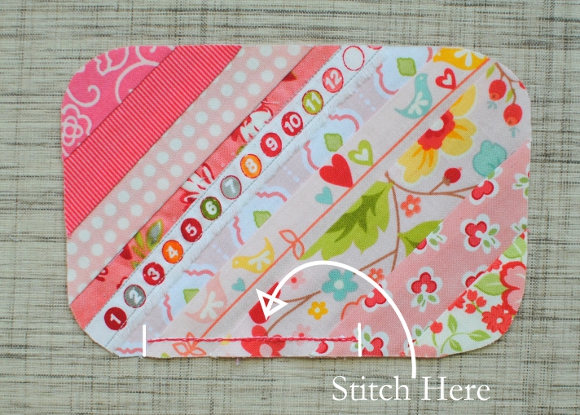 After stitching and trimming the patchwork, but before assembling the item, stitch 1/4″ {or whatever seam allowance you’ll be using} from the edge where you’ll leave the item open for turning.
After stitching and trimming the patchwork, but before assembling the item, stitch 1/4″ {or whatever seam allowance you’ll be using} from the edge where you’ll leave the item open for turning.
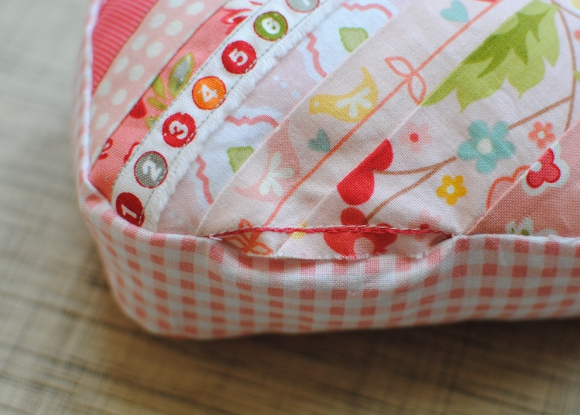 When you leave the opening for turning, stitch a couple of stitches into the stay stitching on either edge. Then turn your item, you’ll find that the seams will not come apart past the stay stitching!
When you leave the opening for turning, stitch a couple of stitches into the stay stitching on either edge. Then turn your item, you’ll find that the seams will not come apart past the stay stitching!
 When you sew the opening closed, make sure to conceal the stay stitching, or, if it shows, simply remove it.
When you sew the opening closed, make sure to conceal the stay stitching, or, if it shows, simply remove it.
I don’t know why I didn’t think of this sooner {maybe I’m the last person to start using this technique}, but is sure has helped my little patchwork accessories turn out easier and more finished, especially when using string piecing!
P.S. The finished pincushion is from the Princess & the Pea Pincushion tutorial for Riley Blake Cutting Corners College! Normally I would leave my opening on the bottom and not on the patchwork top, but since I had the patchwork made up, I thought it was easier to show this example than make something else!

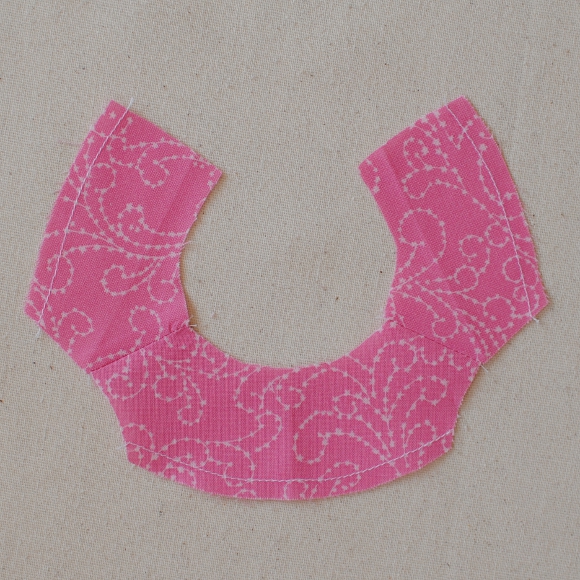

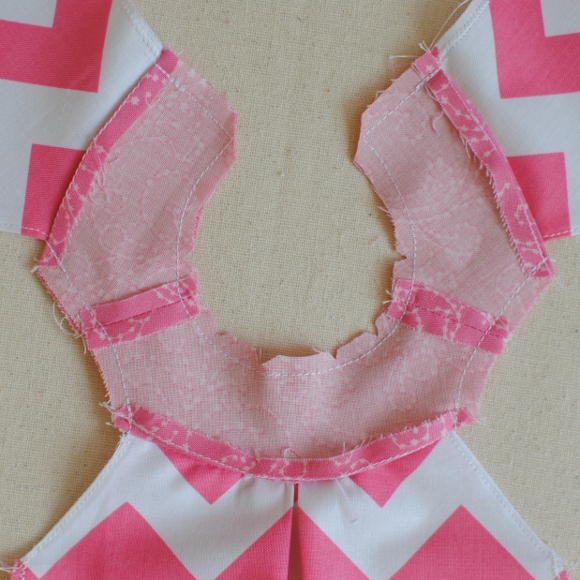
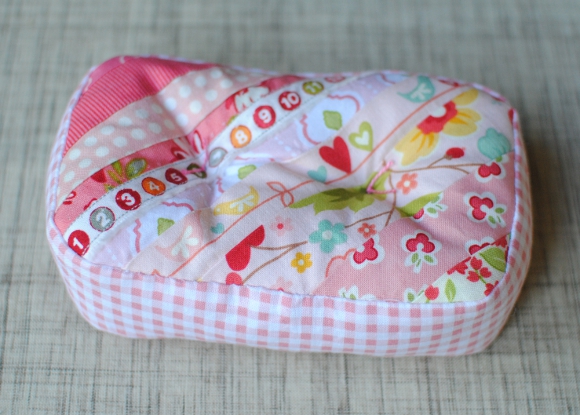
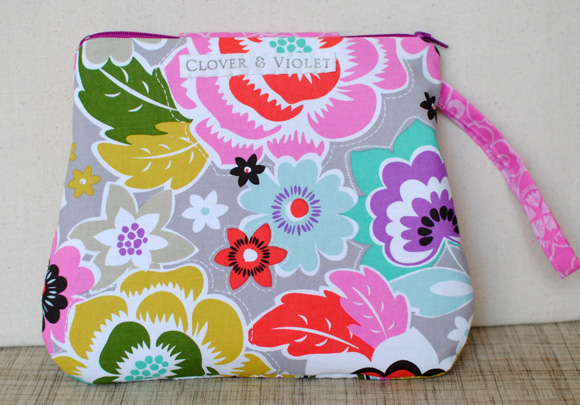
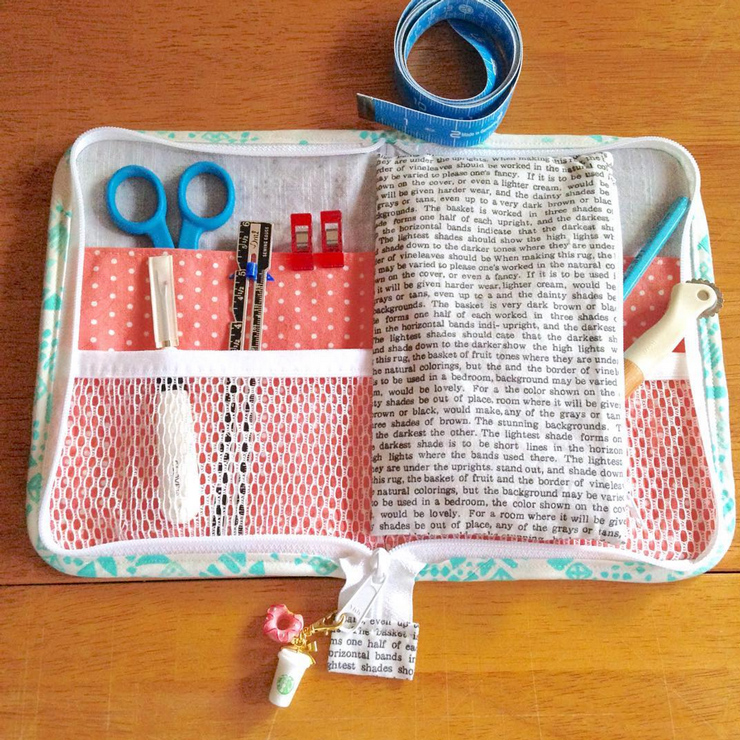
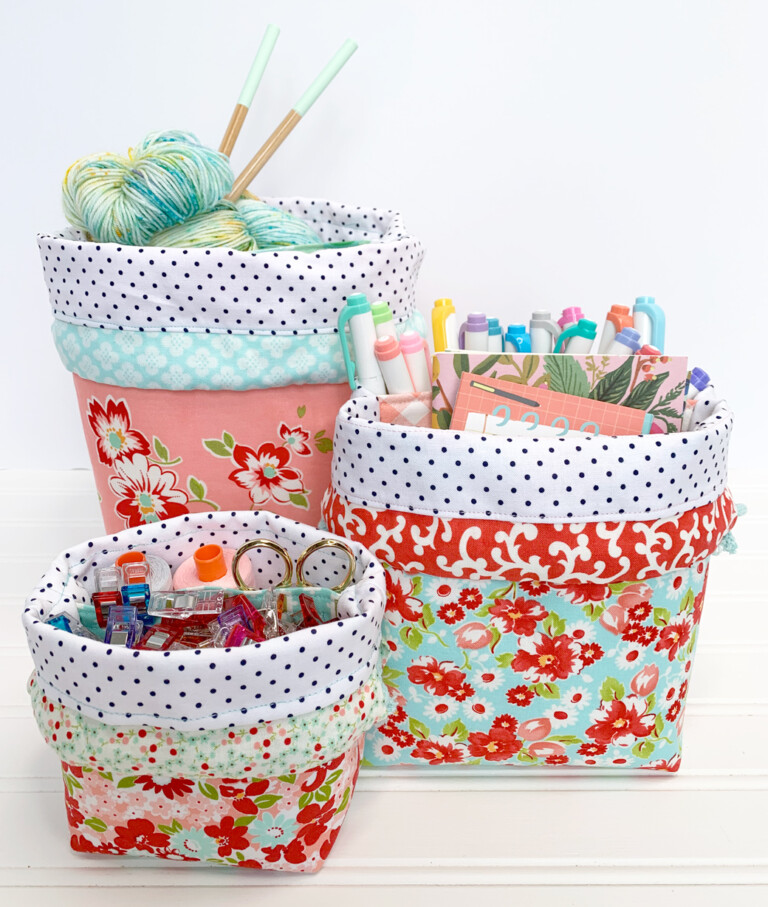
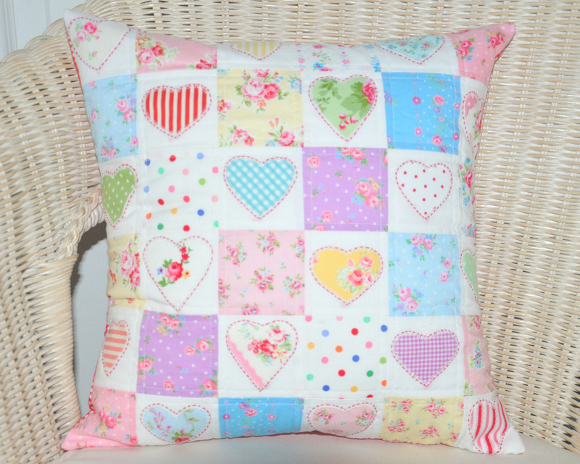

Hi Jennie and Clara. This is so clever. What a great idea. I always struggle with these things when making my pin cushions or even my patchwork baby blankets. I will absolutely hive this a go. Thanks for sharing.
Annette
My Rose Valley
Thank you for the tips, I will probably be using this soon… I just ordered “Emmaline” dress pattern from Violette Field Threads, and I have never followed a pattern for making a dress, so it will be interesting!
Hi Jennie – love the tip, I am old school with your mom – I knew this trick, but I learned another trick that helps with pressing little edges, opening seams and hems – a clapper (this is really from the olden days to be sure!!). Using the steam setting on the iron, press it into place (if the fabric allows – cotton, wool, etc.) and then take the wooden clapper and hold it firmly on the area you have just steamed/pressed. It really does make a difference. I have asked my Dad to make me one along with a point turner/presser/creaser (I am doing my part to keep him busy :-)). I will let you know how they come out.
Cool trick!
Pretty pin cushion!! I love those colors!!
Wow I’ve never heard of stay stitching but it sounds very useful.
What a great tip! I especially will be trying it next time I make anything that needs to be turned!
Thank you so much for this tip! I’ve been sewing for over 35 years and cannot believe I didn’t do this. Making a yoked dress tomorrow and will use this great tip! Thanks!
GENIUS!!! One of those “why didn’t I think of that” moments…
You clever woman! and your mum is amazing! I think the little pincushion with selvedge is fabulous! but enough of the !!!s
I am just getting into garment making so this is a brilliant tip. thanks for sharing. Sure wish I had someone to call like you do!